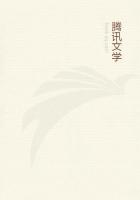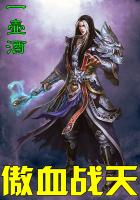These studies ought to be comparative, otherwise they are worthless. As Mr. Hartland calls Daramulun "an eternal Creator with a game leg" who "died," he may call Zeus an "eternal father, who swallowed his wife, lay with his mother and sister, made love as a swan, and died, nay, was buried, in Crete". I do not think that Mr. Hartland would call Zeus "a ghost-god" (my own phrase), or think that he was scoring a point against me, if I spoke of the sacred and ethical characteristics of the Zeus adored by Eumaeus in the Odyssey. He would not be so humorous about Zeus, nor fall into an ignoratio elenchi. For my point never was that any Australian tribe had a pure theistic conception unsoiled and unobliterated by myth and buffoonery. My argument was that AMONG their ideas is that of a superhuman being, unceasing (if I may not say eternal), a maker (if I may not say a Creator), a guardian of certain by no means despicable ethics, which I never proclaimed as supernormally inspired! It is no reply to me to say that, in or out of Mysteries, low fables about that being are told, and buffooneries are enacted. For, though I say that certain high ideas are taught in Mysteries, I do not think I say that in Mysteries no low myths are told.
I take this opportunity, as the earliest, to apologise for an error in my Making of Religion concerning a passage in the Primitive Culture of my friend Mr. E. B. Tylor. Mr. Tylor quoted a passage from Captain John Smith's History of Virginia, as given in Pinkerton, xiii. pp. 13-39, 1632. In this passage no mention occurs of a Virginian deity named Ahone but "Okee," another and more truculent god, is named. I observed that, if Mr. Tylor had used Strachey's Historie of Travaile (1612), he would have found "a slightly varying copy" of Smith's text of 1632, with Ahone as superior to Okee. I added in a note (p. 253): "There is a description of Virginia, by W. Strachey, including Smith's remarks published in 1612. Strachey interwove some of this work with his own MS. in the British Museum." Here, as presently will be shown, I erred, in company with Strachey's editor of 1849, and with the writer on Strachey in the Dictionary of National Biography. What Mr. Tylor quoted from an edition of Smith in 1632 had already appeared, in 1612, in a book (Map of Virginia, with a description of the Countrey) described on the title-page as "written by Captain Smith," though, in my opinion, Smith may have had a collaborator.
There is no evidence whatever that Strachey had anything to do with this book of 1612, in which there is no mention of Ahone. Mr.
Arber dates Strachey's own MS. (in which Ahone occurs) as of 1610-1615. I myself, for reasons presently to be alleged, date the MS. mainly in 1611-1612. If Mr. Arber and I are right, Strachey must have had access to Smith's MS. before it was published in 1612, and we shall see how he used it. My point here is that Strachey mentioned Ahone (in MS.) before Smith's book of 1612 was published. This could not be gathered from the dedication to Bacon prefixed to Strachey's MS., for that dedication cannot be earlier that 1618. I now ask leave to discuss the evidence for an early pre-Christian belief in a primal Creator, held by the Indian tribes from Plymouth, in New England, to Roanoke Island, off Southern Virginia.
Prim. Cult. ii. p. 342.
Arber's Smith, p. cxxxiii.
Hakluyt Society, Strachey, 1849, pp. xxi., xxii.
THE GOD AHONE.
An insertion by a manifest plagiary into the work of a detected liar is not, usually, good evidence. Yet this is all the evidence, it may be urged, which we have for the existence of a belief, in early Virginia, as to a good Creator, named Ahone. The matter stands thus: In 1607-1609 the famed Captain John Smith endured and achieved in Virginia sufferings and adventures. In 1608 he sent to the Council at home a MS. map and description of the colony. In 1609 he returned to England (October). In May, 1610, William Strachey, gent., arrived in Virginia, where he was "secretary of state" to Lord De la Warr. In 1612 Strachey and Smith were both in England. In that year Barnes of Oxford published A Map of Virginia, with a description, etc., "written by Captain Smith,"according to the title-page. There was annexed a compilation from various sources, edited by "W. S.," that is, NOT William Strachey, but Dr. William Symonds. In the same year, 1612, or in 1611, William Strachey wrote his Historie of Travaile into Virginia Britannia, at least as far as page 124 of the Hakluyt edition of 1849.
For proof see p. 24. third line from foot of page, where 1612is indicated. Again, see p. 98, line 5, where "last year" is dated as "1610, about Christmas," which would put Strachey's work at this point as actually of 1611; prior, that is, to Smith's publication.
Again, p. 124, "this last year, myself being at the Falls" (of the James River), "I found in an Indian house certain clawes . . .
which I brought away and into England".
If Strachey, who went out with Lord De la Warr as secretary in 1610, returned with him (as is likely), he sailed for England on 28th March, 1611. In that case, he was in England in 1611, and the passages cited leave it dubious whether he wrote his book in 1611, 1612, or in both years.
Mr. Arber dates the MS. "1610-1615," and attributes to Strachey Laws for Virginia, 1612.
Strachey embodies in his work considerable pieces of Smith's Map of Virginia and Description, written in 1608, and published in 1612.
He continually deserts Smith, however, adding more recent information, reflections and references to the ancient classics, with allusions to his own travels in the Levant. His glossary is much more extensive than Smith's, and he inserts a native song of triumph over the English in the original. Now, when Strachey comes to the religion of the natives he gives eighteen pages (much of it verbiage) to five of Smith's. What Smith (1612)says of their chief god I quote, setting Strachey's version (1611-1612) beside it.














